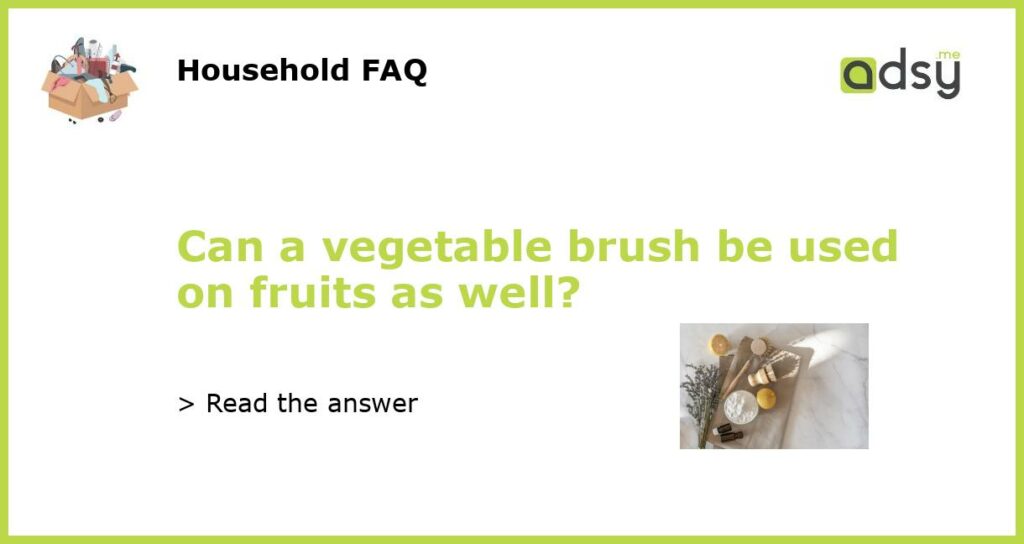Yes, a vegetable brush can be used on fruits as well
When it comes to cleaning produce, a vegetable brush is a handy tool that can help remove dirt, debris, and pesticides from the surfaces of fruits and vegetables. While it is commonly used for cleaning vegetables, it can also be used on fruits. Fruits such as apples, cucumbers, and potatoes have a skin that is often consumed, making it important to clean them thoroughly. Using a vegetable brush can help ensure that these fruits are free from any contaminants that may be present on their surfaces.
The benefits of using a vegetable brush on fruits
Using a vegetable brush on fruits can have several benefits. First, it can help remove dirt and debris that may be stuck on the surface of the fruit. This can be especially beneficial for fruits that have a rough or textured skin, such as apples or pears. Second, it can help remove any wax or pesticide residues that may be present on the fruit. Many fruits are coated with a thin layer of wax to enhance their appearance, and pesticides are often used in farming to protect crops from pests. Using a vegetable brush can help remove these substances, reducing the amount of chemicals that are consumed when eating the fruit. Finally, using a vegetable brush can help remove any bacteria or pathogens that may be present on the fruit’s surface. Washing fruits with water alone may not be sufficient to remove these contaminants, but a vegetable brush can help scrub them away.
How to use a vegetable brush on fruits
Using a vegetable brush on fruits is a simple and straightforward process. First, rinse the fruit under cold running water to remove any loose dirt or debris. Then, hold the fruit firmly in one hand and use the vegetable brush to scrub the surface of the fruit in a circular motion. Be sure to scrub all sides of the fruit, including any crevices or indentations. It is important to use gentle pressure to avoid damaging the fruit’s skin. After scrubbing, rinse the fruit again under running water to remove any remaining dirt or debris. Finally, pat the fruit dry with a clean cloth or paper towel before consuming or storing.
Choosing the right vegetable brush for fruits
When selecting a vegetable brush for use on fruits, there are a few factors to consider. First, choose a brush with bristles that are firm but not too stiff. This will ensure that the brush effectively removes dirt and debris without causing damage to the fruit’s skin. Second, consider the size and shape of the brush. A brush with a larger, wider head may be more effective at cleaning large fruits like apples or melons, while a smaller brush may be better suited for smaller fruits like grapes or berries. Finally, look for a brush with a comfortable grip that fits well in your hand. This will make it easier to use and control the brush while cleaning the fruit.
Additional tips for cleaning fruits
In addition to using a vegetable brush, there are a few more tips to keep in mind when cleaning fruits. First, always wash your hands before handling produce. This can help prevent the transfer of bacteria or other contaminants from your hands to the fruit. Second, be sure to remove any stickers or labels from the fruit before cleaning. These can harbor bacteria and may also contain adhesive residue that can be difficult to remove. Finally, if you are concerned about pesticides on your fruits, consider choosing organic options whenever possible. Organic fruits are grown without the use of synthetic pesticides, reducing the potential for pesticide residue on the fruit’s surface.






